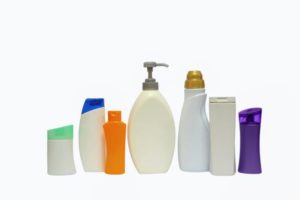 Two recent articles about BPA (bisphenol A), BPS (bisphenol B), and the "BPA-free" label - one a study, and one a review article. The "BPA-free" label unfortunately means the product contains a product similar to BPA (typically BPS) and with the same problems as BPA. Both articles discuss the accumulating health reasons to try to avoid these endocrine disruptors. Which is really , really tough to do given that plastics are all around us and used by us every day.
Two recent articles about BPA (bisphenol A), BPS (bisphenol B), and the "BPA-free" label - one a study, and one a review article. The "BPA-free" label unfortunately means the product contains a product similar to BPA (typically BPS) and with the same problems as BPA. Both articles discuss the accumulating health reasons to try to avoid these endocrine disruptors. Which is really , really tough to do given that plastics are all around us and used by us every day.
From Science Daily: Prenatal BPA exposure linked to anxiety and depression in boys
Boys exposed prenatally to a common chemical used in plastics may be morelikely to develop symptoms of anxiety and depression at age 10-12. The new study by researchers at the Columbia Center for Children's Environmental Health (CCCEH) within the Mailman School of Public Health examined early life exposure to the chemical Bisphenol A (BPA). Results are published in the journal Environmental Research.
BPA is a component of some plastics and is found in food containers, plastic water bottles, dental sealants, and thermal receipt paper. In the body, BPA is a synthetic estrogen, one of the class of chemicals known as "endocrine disruptors." The Columbia researchers, led by Frederica Perera, PhD, DrPH, director of CCCEH, previously reported that prenatal exposure to BPA was associated with emotionally reactive and aggressive behavior, and more symptoms of anxiety and depression in boys at age 7-9.
Perera and her co-investigators followed 241 nonsmoking pregnant women and their children, a subset of CCCEH's longstanding urban birth cohort study in New York City, from pregnancy through childhood....Researchers controlled for factors that have been previously associated with BPA exposure levels, including socioeconomic factors. After separating the data by sex, they found that boys with the highest levels of prenatal exposure to BPA had more symptoms of depression and anxiety than boys with lower levels of prenatal exposure to BPA; no such associations were found in girls.
From Endocrine News: Warning Signs: How Safe Is “BPA Free?”
While stickers are showing up declaring certain products “BPA Free,” that doesn’t mean they’re necessarily safe. Could bisphenol S be even worse than the compound it is supposed to be replacing?
Human exposure to BPA is as ubiquitous as the stickers showing up now that proclaim products BPA free. The chemical used to make plastic has been linked to all kinds of reproductive issues, and even thought to play a role in the development of obesity and cardiovascular events, so industry is taking some steps to correct the problem (after much wailing and gnashing of teeth on their part). These stickers read “BPA FREE” and “NON-TOXIC PLASTIC” in bold letters and usually feature leaves and a green motif, the implication being that these products are safe and healthy.
But “BPA free” does not mean “EDC free” [endocrine disruptor free] and many products now contain bisphenol S as a substitute for BPA. BPS is a similar chemical and has been found in everything from canned soft drinks to receipt paper to baby bottles. (The FDA banned BPA in baby bottles.) It’s been found in indoor dust samples and is beginning to show up in human urine, and it has been reported to be less biodegradable than BPA. Animal studies have implicated BPS in impaired offspring development. And the production of BPS is increasing annually.
“Recent studies testing BPS and comparing it to BPA show that BPS is as bad, if not worse, than BPA as an EDC,” says Andrea Gore, PhD, professor and Vacek Chair of Pharmacology at the University of Texas in Austin, and editor-in-chief of Endocrinology. “’BPA free’ can give consumers a false sense of security about the product.”
According to Kimberly H. Cox, a postdoctoral fellow studying reproductive endocrinology at Massachusetts General Hospital in Boston, the effects of BPA and BPS are subtler than say, PCBs or pesticides, where exposures came at high levels, with devastating effects. The effects of BPA and BPS depend on the timing, length, and dose of exposure, and numerous studies have shown that there are effects on the reproductive system, for example, at doses of BPA much lower than what has been determined as a “safe” exposure by the EPA. And now there also seem to be effects of BPS on the development of the reproductive system, as well as the brain regions that control reproduction.
“When endocrinologists talk about BPA, they frequently describe it as estrogenic – and do not point out the other endocrine systems that are being altered, such as thyroid hormone,” Wayne says. “Our paper emphasizes that BPA and BPS are activating both estrogenic and thyroid hormone pathways. This suggests that EDCs are having much broader effects on health and disease than just mimicking estrogens (which is bad enough).”
